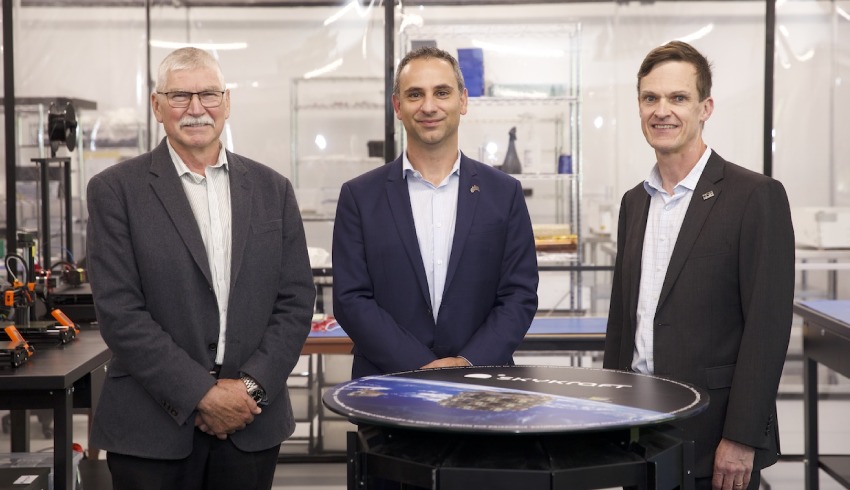The UNSW Canberra City campus is home to a newly launched Skykraft facility, set to support the development of a 300-kilogram space payload, scheduled to launch aboard a SpaceX rocket from Florida later this year.
The payload – the largest ever manufactured in Australia – will form part of a proof of concept for the prospective deployment of a constellation made up of over 200 satellites providing air traffic management (ATM) services.
Space-based ATM services aim to deliver surveillance and communications data for aircraft travelling across regions not covered by existing systems, including oceanic or remote locations.
“Skykraft’s space-based solution allows real-time communications between air traffic controllers and pilots, allowing for the reduction in separation between aircraft over oceanic airspace, enhancing efficiency and delivering environmental benefits,” Skykraft’s chairman, Air Vice Marshal (Ret’d) Mark Skidmore, said.
“Our satellite constellation will be a world-first, proudly out of Australia.”
Skykraft affirmed its commitment to generating new onshore opportunities, while also supporting the delivery of sovereign capability for defence and government programs.
The new Skykraft facility was officially opened by the head of the Australian Space Agency, Enrico Palermo, who noted its contribution to the growth of the local space sector.
“This facility further emphasises the great momentum that’s been fostered since the establishment of the Australian Space Agency and why space is one of six priorities under the Australian government’s Modern Manufacturing Strategy,” Palermo said.
“When our space sector grows it not only creates opportunities within those space businesses but across a range of industries, which means jobs with all different skillsets.”
In total, the new facility is tipped to produce five satellites by 30 June 2022 and a further 12 satellites in the second half of 2022.
Production is expected to ramp-up in 2023, with 45 satellites scheduled for production in the first half of 2023 and 120 satellites in the second half.

